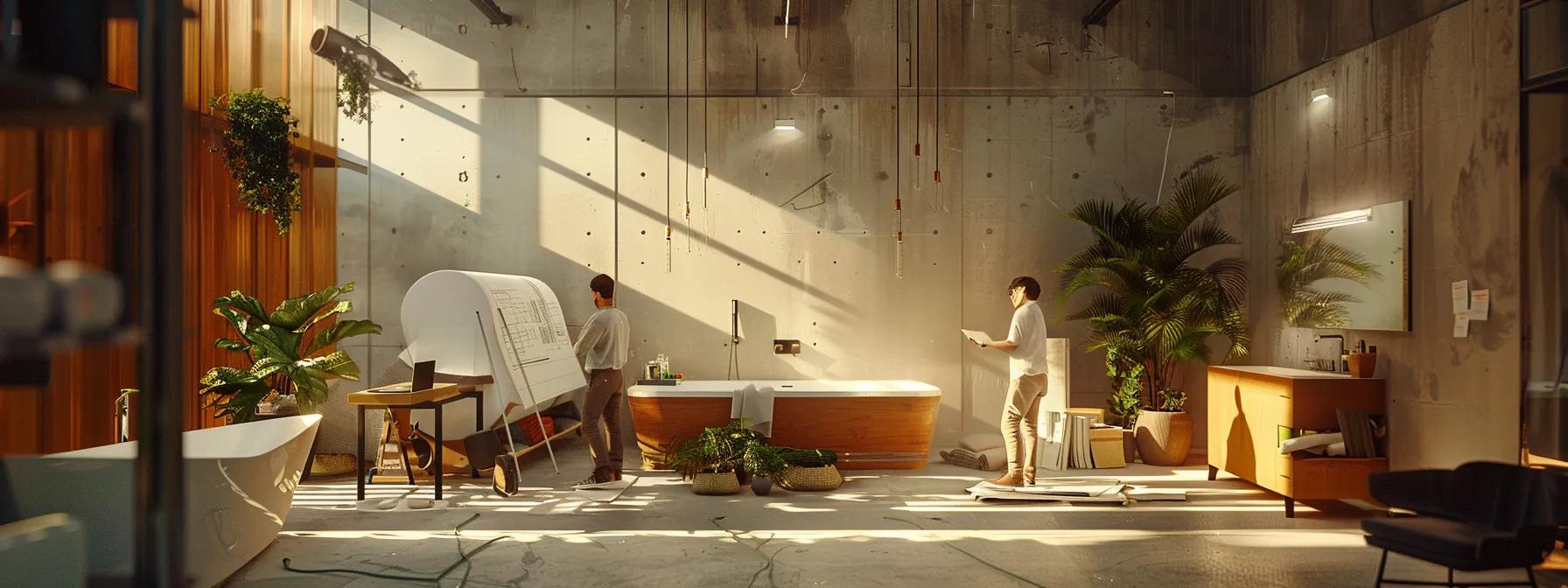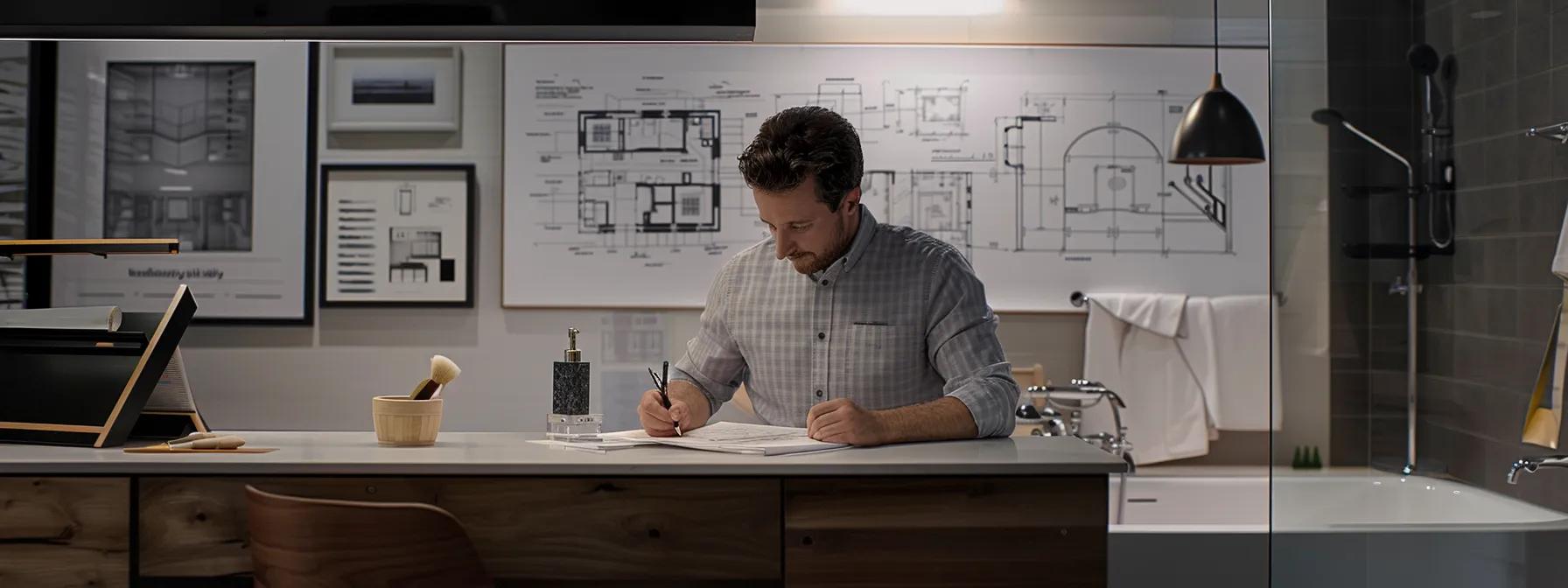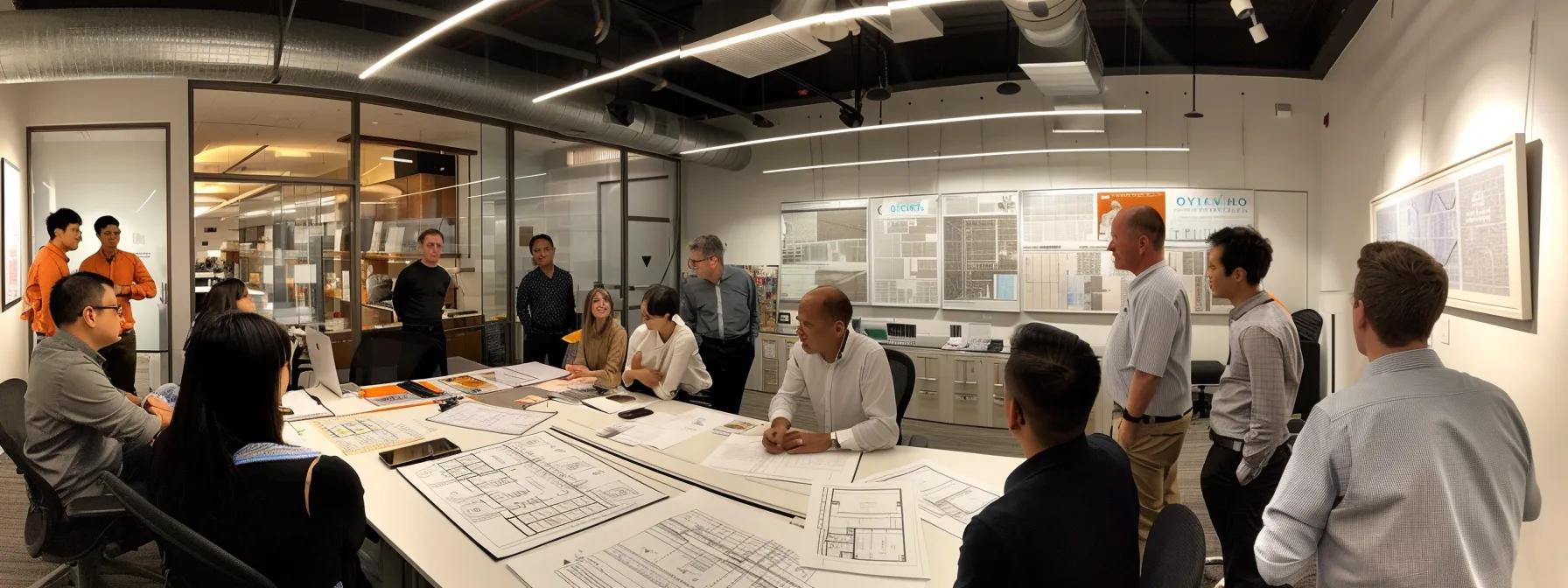Bathroom renovations are among the most transformative and impactful projects in home improvement. Yet, one of the most misunderstood aspects of such projects is the labor expense. Homeowners frequently grapple with issues such as fluctuating costs, varying rates among skilled trades, and unexpected fees that derail budgets. Understanding and managing labor expenses is essential for a successful bathroom remodel that meets both aesthetic and functional expectations. This article explains the key components driving labor costs in bathroom upgrades, examines how different professionals contribute to total expenses, and provides strategies for managing these costs effectively. As remodeling projects increasingly focus on transparency and return on investment, knowing the finer details of labor costs helps homeowners make informed decisions while maximizing the quality of their results.

Bathroom renovations involve several cost-driving factors, with labor expenses representing a major share of the overall budget. These expenses are not merely a function of time spent but encompass a diverse range of tasks, detail-oriented processes, and specialized skills. At the outset, it is vital to identify the key elements that influence labor costs.
Multiple skilled trades are required to achieve a comprehensive bathroom remodel. Electricians, plumbers, tilers, carpenters, and painters all contribute to creating a finished space that meets rigorous standards. For instance, plumbing work might include reconfiguring pipelines for new fixtures such as sinks, bathtubs, and showers. Additionally, tiling professionals must prepare surfaces meticulously and install floor and wall tiles with precision to ensure water resistance. This multi-faceted team of experts often results in more robust labor costs as each professional’s service is essential and cannot be compromised. Furthermore, hiring specialists ensures regulation compliance with local building codes and permits. With each trade requiring specific equipment, training, safety measures, and insurances, the variety of roles involved directly impacts overall pricing.
Labor charges can be structured as hourly rates or fixed bids. Hourly rates provide transparency into how long each task takes, giving homeowners a breakdown of work accomplished. However, this method might lead to ballooning costs if unforeseen issues arise during the remodel. In contrast, a fixed bid offers a predetermined total cost based on the scope of work, which can ease budgeting concerns but may result in higher initial estimates. The choice between these pricing models can influence a homeowner’s confidence and planning. For example, an experienced contractor might offer a fixed bid if the bathroom remodel is straightforward, whereas a project with unexpected complexities—such as outdated plumbing or hidden moisture damage—may benefit from an hourly billing approach to account for the variable workload.
Worker experience and specialization are crucial factors in labor expense determination. Skilled tradespeople with extensive backgrounds in bathroom renovations tend to charge premium rates, yet their expertise minimizes the risks associated with rework and permits a higher quality end product. Specialized professionals, like certified tile setters or licensed plumbers, bring reliability and precision to the job. Their work not only aligns with safety standards but also ensures increased durability and aesthetic quality. Homeowners may find that investing in more experienced tradespeople results in smoother project execution, fewer delays, and long-term savings through reduced maintenance needs. This expertise becomes particularly important in areas that require detailed craftsmanship, such as custom cabinetry or designer tiling installations.
Permits and inspections are not directly labor but are essential administrative components that can add to labor overhead. Many remodeling projects require rigorous inspection protocols to ensure compliance with building codes, which in turn necessitate additional documentation and contractor site visits. These fees, though sometimes minor compared to overall labor costs, can disrupt scheduling and contribute to delays if paperwork is not managed effectively. Skilled contractors often factor these requirements into their bids, anticipating potential administrative tasks and site coordination efforts. Homeowners should be aware of these costs early on, as a clear understanding of permit-related fees helps avoid surprises during the remodeling project.

Understanding the variables that drive labor costs in a bathroom remodel is crucial. Several primary factors determine how much labor is required and, correspondingly, the overall expenditure. Among these, bathroom size, complexity, material choices, and demolition needs play significant roles.
The size of the bathroom and its structural layout are paramount in determining labor hours. A small powder room may require minimal labor compared to a full bathroom designed with custom features. Larger bathrooms often include additional installations such as multiple sinks, intricate tiling patterns, and extensive cabinetry. The more expansive the area, the greater the volume of work required, and thus the higher the labor cost. Additionally, an unconventional layout may necessitate specialized planning and additional hours to seamlessly integrate new installations with existing structures. This aspect directly translates into increased charges from professionals who need to adapt their work processes to accommodate the specific dimensions and design challenges of the space.
When a bathroom remodel includes custom features such as unique tile patterns, bespoke cabinetry, or high-end fixtures, labor costs tend to escalate. Custom work involves more than just installation—it requires careful planning, precise measurements, and often a level of artistic execution. Every alteration from standard recipes—whether it is a curved shower or custom counter installation—demands extra time and expertise. Such tasks can also lead to longer completion times especially if the design requires cross-collaboration among various trades. Consequently, the more customized the bathroom design, the more detailed planning is necessary, and the higher the labor charges. Homeowners who prioritize a personalized aesthetic should factor additional labor costs into their overall project budget.
Another significant determinant in labor cost is the type of materials chosen for the remodel. Premium materials like granite countertops, high-end porcelain tiles, or luxurious marble elements require specialized installation techniques. For instance, the installation of marble countertops demands precision cutting and finishing skills that not all contractors possess. Similarly, certain eco-friendly or innovative materials might necessitate detailed site preparation and adherence to strict manufacturer guidelines. These factors ultimately drive up labor time and expense. Homeowners must balance their material choices with the expected installation challenges to ensure that labor costs do not spiral beyond affordability.
Before new installations can begin, old systems and fixtures often need to be removed. Demolition and site preparation are labor-intensive tasks that account for a substantial portion of the overall labor cost. This process can include tearing down outdated walls, removing old tiles, or even addressing hidden mold or water damage issues that complicate the remodel. Efficient debris removal and cleanup are integral to maintaining a safe work environment, especially in enclosed spaces such as bathrooms. The complexity of demolition work can vary widely; in some cases, it may reveal unforeseen problems that require additional time and expense. As such, it is important for homeowners to develop contingency plans and budgets that address potential delays or extra labor needs during demolition and site preparation.
Every bathroom renovation carries the risk of unexpected issues that can impact labor costs. Hidden water damage, pre-existing mold, or outdated electrical systems might only become apparent once work has commenced. Contractors frequently need to allocate extra hours to remediate these unforeseen challenges, which in turn increases the labor budget. Proactive communication between the homeowner and the contractor is essential to address these issues promptly. Thorough inspections and planning in the early stages of the project can mitigate some risks; however, a flexible contingency budget for labor is advisable. By preparing for unexpected complications, homeowners can avoid significant disruptions and ensure that the remodel proceeds smoothly despite potential setbacks.

A bathroom remodel is a collaborative effort that requires the expertise of multiple professionals. Each trade brings specialized skills that influence overall labor expenses. Understanding the role of each professional can help homeowners allocate funds appropriately and even negotiate rates where possible.
Plumbers are among the most critical players in a bathroom remodel, responsible for installing new fixtures and adjusting existing piping. Their work ensures that the new bathroom functions properly without leaks or water damage. Professional plumbing services include installing bathtubs, sinks, toilets, and sometimes even modern bidets. Labor fees for plumbers are typically based on both hourly rates and the complexity of the piping work. When outdated systems are involved, upgrades or reroutes may be necessary, which further increases labor costs. Homeowners should also consider that well-executed plumbing work minimizes the likelihood of future repairs and water-related issues, offering long-term savings that justify the initial labor investment.
Electricians contribute significantly to bathroom renovations by installing lighting, electrical outlets, and ventilation systems. Modern bathrooms often feature elaborate lighting schemes that enhance both functionality and ambiance. Additionally, proper placement of outlets is critical for safety and convenience, especially if high-power appliances like heated towel racks or advanced ventilation systems are installed. The role of an electrician also extends to updating or reconfiguring wiring that may have been outdated or insufficient for new bathroom demands. The labor rates for electricians usually depend on the complexity of the required work and the current state of the existing electrical system. In some cases, compliance with local safety regulations may necessitate additional labor, further influencing the overall cost.
Tiling professionals are tasked with the crucial job of installing floor and wall tiles, a process that directly impacts both the durability and aesthetic appeal of the bathroom. Precision in tile alignment, proper grouting, and ensuring water-proof layouts are refined tasks that require expertise. Professional tilers often charge based on the square footage of the areas covered, and specialized patterns or custom designs further extend labor times. Their attention to detail helps prevent future issues such as water seepage or tile cracks, ultimately adding to the longevity and visual harmony of the remodel. Homeowners should factor in additional labor costs if high-end materials, like porcelain or natural stone, are selected, as these require an even more exacting installation process.
Carpenters play an indispensable role in bathroom renovations through the installation of custom cabinetry, framing of new structures, and detailed trim work. Their expertise is especially important when creating bespoke storage solutions, preparing spaces for fixtures, and designing aesthetically pleasing details that tie the entire remodel together. The cost of carpentry labor is influenced by the complexity of the design, the type of wood used, and the precision required for a cohesive look. Furthermore, carpentry work often involves multiple stages, such as rough framing, finishing, and fine detailing, each of which compounds labor expenses. Homeowners who seek a high-end, tailor-made appearance for their bathrooms must be prepared for the potentially substantial investment in skilled carpentry labor.
Painters finalize the bathroom remodel by preparing surfaces and applying finishes that match the desired aesthetic. Quality painting not only beautifies the space but also serves as a protective barrier against moisture, mold, and deterioration. Before painters begin their work, surfaces often require extensive preparation, such as priming, sanding, and filling gaps to ensure that the final coat adheres properly. This preparatory work can add to labor costs, but it is crucial for longevity and aesthetic appeal. Painter rates are typically determined by the size of the area to be covered and the complexity of the finish. A well-painted bathroom enhances both the design and durability of the remodel, making painter fees a vital component of overall labor expenses.

Labor costs for bathroom renovations can vary dramatically depending on geographic location. Factors such as local economic conditions, the availability of skilled trades, and regional building codes play an influential role in the pricing structure. Understanding how location impacts labor expenses can empower homeowners to make more informed decisions and better manage their renovation budgets.
Urban centers typically have higher labor rates due to increased living costs, greater demand for skilled trades, and more stringent regulatory requirements. In metropolitan areas, contractors might charge a premium for their services because of the competitive market and higher overhead costs. Conversely, suburban and rural regions often benefit from lower labor rates, as the cost of living and associated expenses are generally lower. However, these regions might have limited access to highly specialized professionals, potentially impacting the quality and efficiency of work. Homeowners should weigh the cost differences against accessibility and availability when contemplating a bathroom remodel in different locations.
Economic conditions in a particular region have a direct influence on labor wages. In areas where the economy is strong, contractors are likely to command higher wages, reflecting the increased demand for their services as well as the cost of living. Conversely, in areas experiencing economic downturns, labor rates might be more competitive but could come at the expense of reduced availability or quality. Local economic conditions also affect contractors’ ability to invest in new technologies and training, which can further impact the overall labor cost. Homeowners should research regional trends and consult with multiple contractors to determine how economic factors in their area will influence labor expenditures.
The pool of qualified tradespeople in any given geographic region plays a significant role in determining labor costs. In regions where skilled professionals are in high demand but short supply, labor rates can be significantly higher. Conversely, areas with a larger workforce in the construction and remodeling sectors may experience lower labor costs due to competitive market dynamics. This availability can also affect project timelines; a scarcity of skilled workers may lead to delays, as contractors juggle multiple projects simultaneously. Homeowners should consider these factors and seek out experienced contractors with a proven track record in their specific region to balance quality and cost effectively.
Different regions enforce varying building codes and regulations, which can influence labor costs. Stringent codes might require additional inspections, permits, and specialized workmanship, all of which add to labor overhead. For instance, urban centers with strict health, safety, and environmental standards might mandate premium installation practices and detailed documentation. Contractors working under these conditions often include these costs in their bids. In contrast, regions with more lenient building codes may offer lower labor expenses but carry potential risks regarding future compliance or resale value. Homeowners must ensure that any project adheres to local regulations while considering how these requirements integrate into the overall labor budget.
Managing labor expenses in a bathroom remodel is as much about smart planning as it is about understanding the market. Homeowners can adopt several strategies to reduce labor costs without compromising the quality of work. Proactive planning, transparent communication, and careful selection of contractors all contribute to a more efficient remodel process.
One of the most effective strategies for managing labor expenses is to obtain multiple detailed quotes from various contractors. By comparing bids, homeowners can discern pricing variations and understand what each quote includes. Detailed estimates typically break down labor, materials, permit costs, and contingencies, providing clarity on how much each segment of the project will cost. This competitive process forces contractors to offer their best rates while ensuring that all aspects of the labor work are covered. Homeowners should request references and past project details to confirm that the lowest bid does not come at the expense of quality. Competitive bidding also offers negotiation leverage, enabling homeowners to secure better deals without sacrificing workmanship.
A phased renovation approach can be an effective cost-management strategy. Instead of tackling the entire project in one go, homeowners might choose to complete the remodel in stages. This allows for better control over immediate labor costs and provides flexibility to adjust plans based on budget constraints or evolving design preferences. For example, initial phases might include essential plumbing and electrical upgrades, while cosmetic enhancements such as tiling or cabinetry can follow as budget permits. A phased approach not only spreads out labor expenses over time but also minimizes disruption to the home’s functionality. Additionally, it enables homeowners to observe the quality of work at each stage before committing to subsequent phases, thereby reducing the risk of costly rework.
Some aspects of a bathroom remodel may lend themselves to a do-it-yourself (DIY) approach, which can significantly reduce labor costs. Tasks such as minor demolition, painting, or simple fixture installations might be handled by the homeowner, provided they have the necessary skills and tools. However, it is essential to assess these tasks realistically and determine whether the cost savings justify the time and potential risk of sub-par work. Taking on DIY projects can reduce labor expenses, but incorrect execution may result in further costs to correct mistakes. Homeowners should balance their ambition with an honest evaluation of their abilities, ensuring that key tasks that require professional precision are left to experts while manageable tasks are performed on their own.
Clear communication is integral to managing labor costs effectively. Homeowners should maintain regular updates with contractors, ensuring that expectations, timelines, and changes are documented and understood by all parties. Consistent communication helps prevent misunderstandings that can lead to costly corrections or delays. Regular project meetings, transparent timelines, and detailed instructions allow for proactive issue resolution, which, in turn, helps to manage labor expenses. Clear communication also establishes accountability, making it easier to track progress and address any variations from the agreed scope of work promptly.
Ensuring that your chosen contractor has a proven track record is essential in managing labor costs. Homeowners should verify credentials, request testimonials, and examine prior project portfolios before making a commitment. A reputable contractor is more likely to provide a realistic labor quote and deliver consistent quality. Checking references and reviews can also reveal whether past clients experienced any unexpected labor cost overruns or delays. Reliable contractors tend to adhere closely to budgets and timelines, ultimately reducing the risk of unanticipated labor expenses. This diligence not only protects the wallet but also ensures confidence in the final outcome of the bathroom remodel.
The overall scope of a bathroom project plays a crucial role in determining labor expenses. From cosmetic updates to complete gut renovations, the scale and ambition of the remodel directly influence workforce hours and costs. Homeowners need to assess the scope carefully, considering various elements from layout changes to specialized installations.
Cosmetic bathroom updates, such as changing fixtures, repainting walls, or replacing floor tiles, generally entail lower labor costs compared to a full-scale gut renovation. Cosmetic projects typically require less demolition, simple installations, and minimal structural work. In contrast, complete gut renovations demand extensive demolition, significant reinstallation of plumbing and electrical systems, and comprehensive structural modifications. Gut renovations often involve confronting hidden issues, such as outdated wiring or water damage, which can further increase labor hours and expenses. Homeowners must carefully evaluate their renovation goals and budgets before opting for a full gut overhaul, as the labor expense can be disproportionately high compared to simpler cosmetic upgrades.
Changing the layout of a bathroom is a complex task that can significantly impact labor expenses. Altering the layout might require repositioning fixtures, modifying plumbing lines, and restructuring walls. These tasks entail a higher level of expertise and longer labor hours, as contractors must plan and execute layout changes meticulously to maintain functionality and design coherence. The complexity of such work can also trigger additional permit and inspection requirements. As layout alterations inherently involve more risk and disruption, they usually result in higher labor costs. Homeowners should weigh the design benefits against the potential increased expense and consult with professionals to explore cost-effective alternatives for achieving a refreshed layout.
High-end fixtures and custom elements such as luxury bathtubs, designer sinks, or bespoke cabinetry require specialized labor that commands elevated rates. The installation of such components is often sensitive to precise alignment, secure anchoring, and aesthetic detail. Specialized professionals invest additional time to ensure that these high-end elements are integrated seamlessly into the overall design. The extra effort required to handle premium materials means that labor expenses for these tasks are higher, reflecting the added expertise and care. Homeowners seeking a luxurious bathroom remodel must anticipate that the labor associated with specialized installations will increase the project’s cost. Nonetheless, this investment often results in a superior final product that enhances the home’s value and appeal.
The total duration of the bathroom remodeling project is a critical factor in labor cost calculations. Extended project timelines typically result in higher cumulative labor charges. Every additional day can add to the cost not only through direct labor fees but also through potential penalties or extended permit durations. Longer projects also increase the chances of encountering unforeseen issues, which further drive up costs. Efficient project management, therefore, plays a vital role in containing labor expenses. Homeowners and contractors must work collaboratively to streamline processes, reduce downtime, and plan effectively to keep the project within a reasonable timeframe. Balancing ambition and efficiency will not only curb labor costs but also ensure that the bathroom is ready for use sooner.
In summary, labor expenses are a crucial component of any bathroom renovation, influenced by numerous factors including the complexity of tasks, the involvement of multiple skilled trades, geographic variations, and project scope. Homeowners benefit from understanding the different components of labor costs—from the selection of specialized professionals to the impact of permits and unexpected issues. Strategies like obtaining multiple quotes, phasing the project, and maintaining clear communication can help manage these costs effectively. As a final takeaway, being well-informed about labor expenses empowers homeowners to achieve a high-quality, stylish, and functional bathroom renovation without overshooting their budget.
Q: How do labor expenses impact a bathroom remodel overall? A: Labor expenses often constitute a significant portion of the remodel budget, influenced by skilled trades, project complexity, and unforeseen challenges. Managing these expenses is vital to avoid cost overruns while ensuring high-quality workmanship.
Q: How can homeowners reduce labor costs in their bathroom renovations? A: Homeowners can reduce labor costs by obtaining multiple detailed quotes, implementing a phased renovation approach, handling manageable DIY tasks, and maintaining clear communication with contractors to prevent disputes and delays.
Q: Why do labor costs vary based on geographic location? A: Geographic location influences labor costs due to differences in local economic conditions, availability of skilled tradespeople, urban versus rural pricing disparities, and regional building codes. These factors affect wages and overall project expenses.
Q: What is the difference between hourly billing and fixed bids for labor? A: Hourly billing is based on the time taken to complete tasks and can lead to variable costs if issues arise. Fixed bids provide a set cost based on the project scope but may be higher initially. Both methods have advantages depending on the project’s complexity and risk factors.
Q: How do specialized professionals impact labor expenses in high-end remodels? A: Specialized professionals, such as premium carpenters, tile setters, and electricians, command higher rates due to their expertise. Their skills ensure precise installations and compliance with standards, which often results in better long-term quality and durability, justifying the higher cost.
